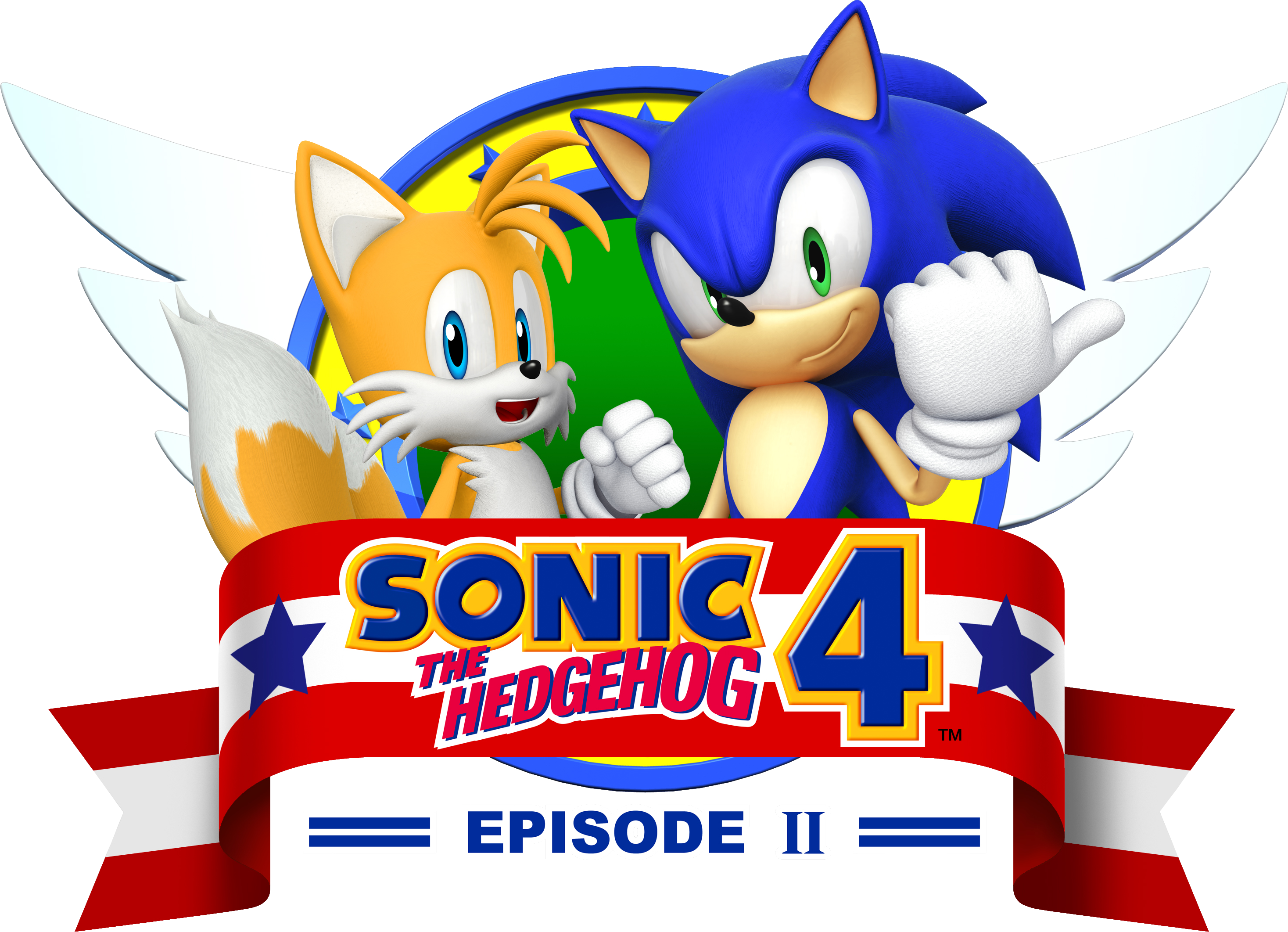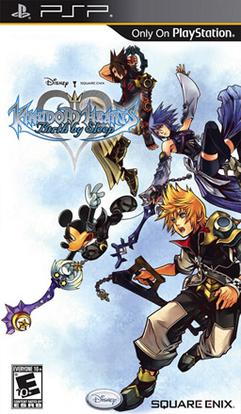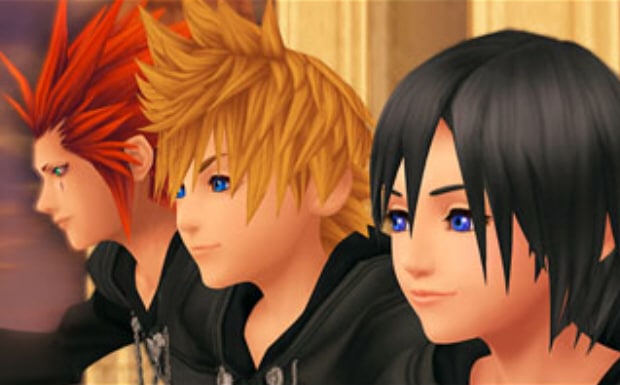The year is 2010. A number of mediocre to absolutely
disgusting console titles have utterly annihilated the reputation of the once
beloved blue hedgehog, Sonic. Fans and critics alike treat each new release
with more and more vitriol, and look to the second dimension, in which the
hedgehog was much better received, for help. The well-received handheld Advance
and Rush games, developed by Dimps, had already set a precedent that 2-D Sonic
games tend to fare better than the console-based 3-D ones, and thus many
believed that a return to 2-D on consoles would save this declining franchise
from the trash heap. Thus, SEGA once again outsourced to Dimps and Sonic the
Hedgehog 4: Episode 1, the start of a downloadable throwback series to the
original Genesis trilogy, was created…and it received one of the most polarized
receptions of any game in the series since Sonic Adventure 2. Most critics liked
it, most others thought it was okay, and much of the fanbase treated it with
almost as much bile as the despicable Sonic the Hedgehog 2006. To go into
detail would make this introduction drag on forever, so I’m just going to use
some popular buzzwords: physics, automation, physics, rehashing, and physics. Oh, and green eyes.
Of course, I did review the game back in October of 2010
and, at the time, I freaking loved it. It was the most fun I had had with a
console Sonic game in nine years. Of course, after the shock of actually
enjoying a Sonic game wore off and I played the game more and more, some of the
problems did begin to become more apparent. In particular, the glitchy, inertia-less
physics started to bug me more and even aside from that it really couldn’t hold a candle to the classics it was billing itself
as a sequel to. That said, I did find myself going back to it a lot and
enjoying myself every time, so I’m still happy that I bought it in the end. Now
we have Episode 2, for which they promised to take our complaints to heart and
make a better game. Did they succeed at doing so or do what Square Enix did earlier
this year with Final Fantasy XIII-2 and fail miserably? The answer lies herein.
----------------------------------
Let’s start things off this time by talking about the
aesthetics. One thing veterans of Episode 1 will immediately notice is that the
game’s visual style has been completely redone, and it looks great. The visuals
are a lot more vibrant and colorful and Sonic’s sprite looks considerably
better and is a lot more expressive. Environments are made out of a lot more
materials than the plastic and cardboard of old. The backgrounds are simply
gorgeous as well and there’s usually a lot going on in them. In Oil Desert’s
background, for example, you can see the drills and machinery operating and you’ll be able to see the various colorful attractions in the
background of White Park. Zones, in general, look very inspired and quite
diverse, and they feature some nice set pieces as well. Oh, and rest assured:
this game, for the most part, does NOT rehash Zones or enemies from older Sonic
games. I can’t say, aside from the enemies, that it’s all-new, as some elements
– especially in Sky Fortress - are definitely going to feel familiar, but the
Zones feel new enough that I doubt you’ll have a problem with it. Unfortunately,
the soundtrack doesn’t fare quite so well.
Many decried the “dying cat” synthesizers of the first episode, and
thankfully, they’re gone, but they’ve been replaced by what will come off at
first as an obnoxious metallic buzzing, or, in the case of Oil Desert Act 2…quacking
ducks. Some tracks may eventually grow on you and there may be some that you’ll
love immediately, but there were definitely several, such as the Eggman boss
theme and White Park Acts 1 and 2, that I just couldn’t get into.
Now it’s time to discuss the gameplay and before you ask,
yes, they did fix the physics and they did a pretty good job at that. All of
Sonic’s jumps and other such movements carry inertia just as they should and
Sonic can no longer stand upright on walls as if his shoes contain ridiculously
powerful magnets. As such, movement feels a great deal better than it did in
Episode 1. They still haven’t gotten the rolling mechanic quite down just yet,
but eh, it’s a small problem at worst. So, with that said, the Rush and Rivals
games aside, if you’ve played a 2-D Sonic game before, you should have a good
idea of what to expect from Sonic 4: Episode 2. It’s a platformer based around
the fact that Sonic can run really, really fast. There are also Rings to
collect so you won’t die, enemies to bounce and homing attack into, springs to
bounce off of and everything you associate with Sonic. However, Sonic 4:
Episode 2 introduces a new gimmick that you will be making use of a lot in the
game.
See, Episode 2 brings Sonic’s sidekick Tails back into
gameplay. You won’t be able to control him solo in single player mode, but you
will be using him a lot to help Sonic get through the level. Pressing the “Square”
button (on PS3) on the ground will cause them both to curl up into an
uncontrollable, spinning ball of death that destroys everything in their path,
which is useful for clearing otherwise insurmountable obstacles and just
annihilating everything. You will have to uncurl from it eventually, however,
as you can’t control left or right movement while using this move. Tails’
ability to fly using his two tails also comes into play; press the “Square”
button in mid-air and Tails will be able to fly you upwards for a short time,
and doing so while underwater will let you use Tails to swim since, as usual,
Sonic can’t do it himself. Really, you’d think he’d have taken lessons by now. Anyway, this is an interesting gimmick that is
executed pretty well. You will be using it a lot to find different routes
through levels and the level design puts it to some other pretty fun and
inventive uses, such as navigating an underwater cave filled with suicidal ice-breathing
walruses, as the game goes on.
 |
And that’s another thing that people hoped would see
improvement: the level design, and, well…it definitely has in
some ways, but some fans will still be disappointed by the overuse of automation.
Yes, Episode 1 was criticized for its perceived overuse of springs and speed
boosters, which some thought was often unnecessary and made the game feel like
it was playing itself at some points. Unfortunately, there’s still plenty of
that here. I never actually found this inherently problematic in Episode 1, but
honestly, even I’m getting kind of tired of it at this point. Don’t get me
wrong; in moderation, just setting the controller down and watching Sonic blast
around at high speeds can be pretty satisfying and there are even times where
it’s kind of satisfying here, but the problem is that this game just overuses
it. Of course, that’s not to say that the level design is bad; there’s
still plenty to enjoy here and the automation doesn’t hurt the experience too much – at least for me – but it is disappointing.
Actually, there was one level that I thought it kind of worked for, and that
was White Park Act 2. Being a level meant to simulate a giant rollercoaster,
the use of springs and boosters felt like it fit and there was still some
decent platforming here and there. Some fans will find the level to be bland,
but personally, I thoroughly enjoyed it.
Anyway, while Episode 2 doesn’t get rid of the automation,
its level design does prove to be quite a bit better than Episode 1’s regardless.
For one thing, levels tend to be a lot larger, providing a lot more to see and
plenty of different ways to get through each stage, which is always a very good
thing. Straight-up platforming appears more frequently than in Episode 1 and
there is much more creative use of stage-specific gimmicks as well as the
previously mentioned team actions. Levels are also very diverse in the
challenges they pose, and speaking of challenge, there’s a LOT more of it than
in Episode 1. It’s not quite what I’d call a particularly difficult game, but
it won’t be a cakewalk either, especially in its second half. Oh, and the game
also has a level that features Sonic riding on Tails’ airplane, in the vein of
such stages as Sky Chase or Tornado Defense (eh…sort of), and it’s probably the
best stage of its kind to appear in the series thus far. And then there are the
bosses, which actually impressed me a lot. Okay, the first one is bad – really bad
– but beyond that, things improve considerably. The Oil Desert and final
bosses, in particular, are some of the most epic, unique and challenging bosses
I’ve fought in a Sonic game in a long time – barring Generations of course –
and all of the fights against Metal Sonic are really fun. It actually surprised
me how good the boss design was; you can really tell that Dimps got on their
A-game here…after the first one. Honestly, it confuses me how that one turned
out so ridiculously easy and boring, especially considering how awesome it looks. But I digress.
 |
| The other ones are awesome, it's just...this one. How. |
And then there are the special stages, which are reminiscent
of Sonic Rush’s special stages, which means that they’re reminiscent of Sonic 2’s
special stages, which have been recycled by the franchise a number of times now. Sonic 4: Episode 2 unfortunately doesn’t even
go as far as Sonic Heroes or Colors DS did to cover this up; you’re just
running forward through a half-pipe, collecting Rings and dodging obstacles.
Don’t get me wrong; the stage is still plenty fun and does add a couple of new twists, and the last few
are pretty dang tough. It’s just that the Sonic 2 special stage is getting kind
of old at this point, and it’s about time for them to come up with a new one. And
if not that, then they really need to give the Blue Sphere special stages from
Sonic 3 & Knuckles a nod. Those were the best in the whole freakin’ series.
Sonic 4: Episode 2 allows you to play co-op with a friend,
either locally or online, in which one player takes control of Sonic and one
takes control of Tails. I’m not much of a co-op guy myself, but I did try it
out, and it seems to work pretty well. The one thing I found fault with was
that both players share one Ring counter, basically meaning that if one player
gets hit, neither player will have any Rings. Honestly, I think that it would
have worked better if they either had separate Ring counters or only half of
the collected Rings were lost if one of them took a hit. Regardless, because of
this, you will want to play co-op with someone as skilled as you are, and also
because it’s easy to outrun other players thanks to how fast the game moves.
One more thing: if you own both Episodes 1 and 2 on the same
console, you will actually have access to a free bonus episode called “Episode
Metal”, in which you play as Metal Sonic through four levels from Episode 1 in
a story that bridges the gap between Episodes 1 and 2, and the four levels
feature different designs from their original incarnations. Unfortunately,
since I bought Episode 1 on Wii, which Episode 2 is not available for, I
probably won’t be playing it anytime soon. I can’t say it’s not cool that they
did that, though.
The Good:
+ Great graphics
+ Greatly improved physics
+ Team gimmick works well
+ Generally solid level design
+ Co-op is good
+ Free bonus episode if you own both main episodes on one console
+ Great boss fights…
+ Greatly improved physics
+ Team gimmick works well
+ Generally solid level design
+ Co-op is good
+ Free bonus episode if you own both main episodes on one console
+ Great boss fights…
The Bad:
- …Except for the first
- Too much automation
- Hit or miss soundtrack
- Sonic 2-style special stages are getting old
- Too much automation
- Hit or miss soundtrack
- Sonic 2-style special stages are getting old
--------------------------------------
So how does Episode 2 fare when compared to the classics?
Well, I’m afraid Dimps still has a ways to go before they can reach that
standard of quality. Sonic 2 and 3 & Knuckles are, after all, some of the
greatest 2-D platformers ever made, though, personally, I don’t think Sonic 4
will ever get that good no matter how
many episodes it gets. In its own right, though, Sonic 4: Episode 2 is a very
enjoyable 2-D platformer despite the flaws and it’s a significant improvement over
Episode 1. I personally found it to be worth the money I paid for it, and you
just might, too. Until next time, adios.
Grade: B












